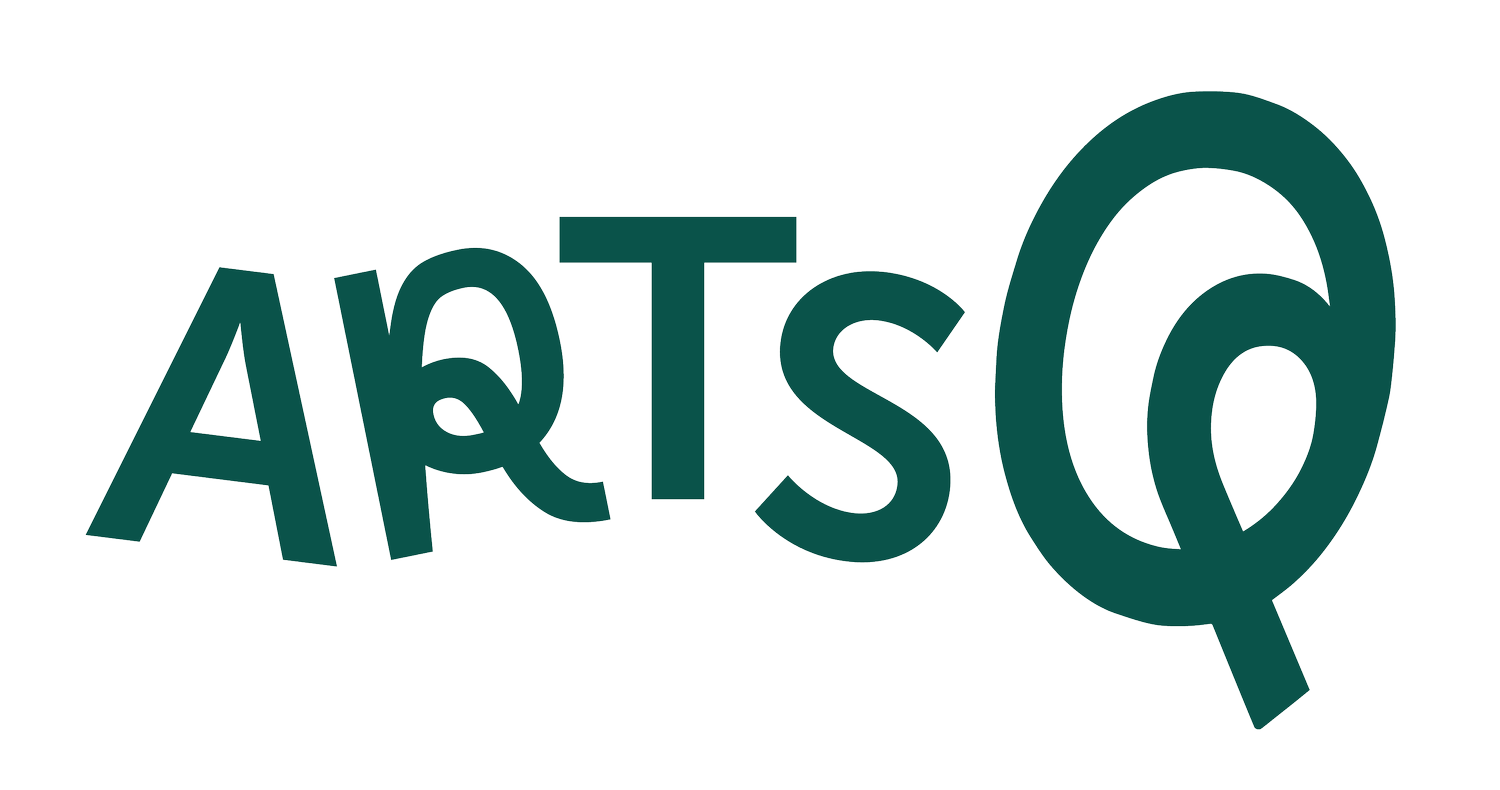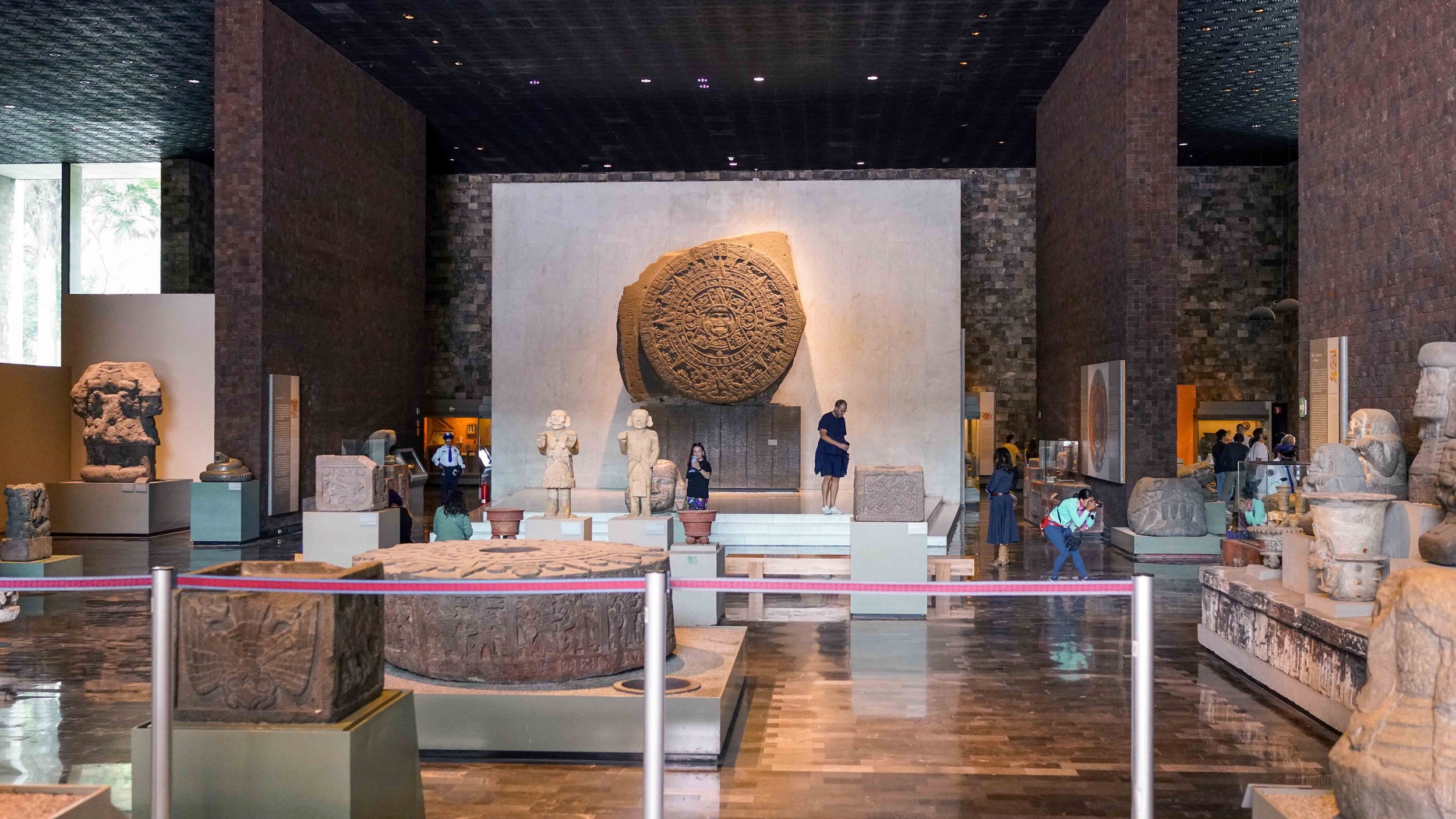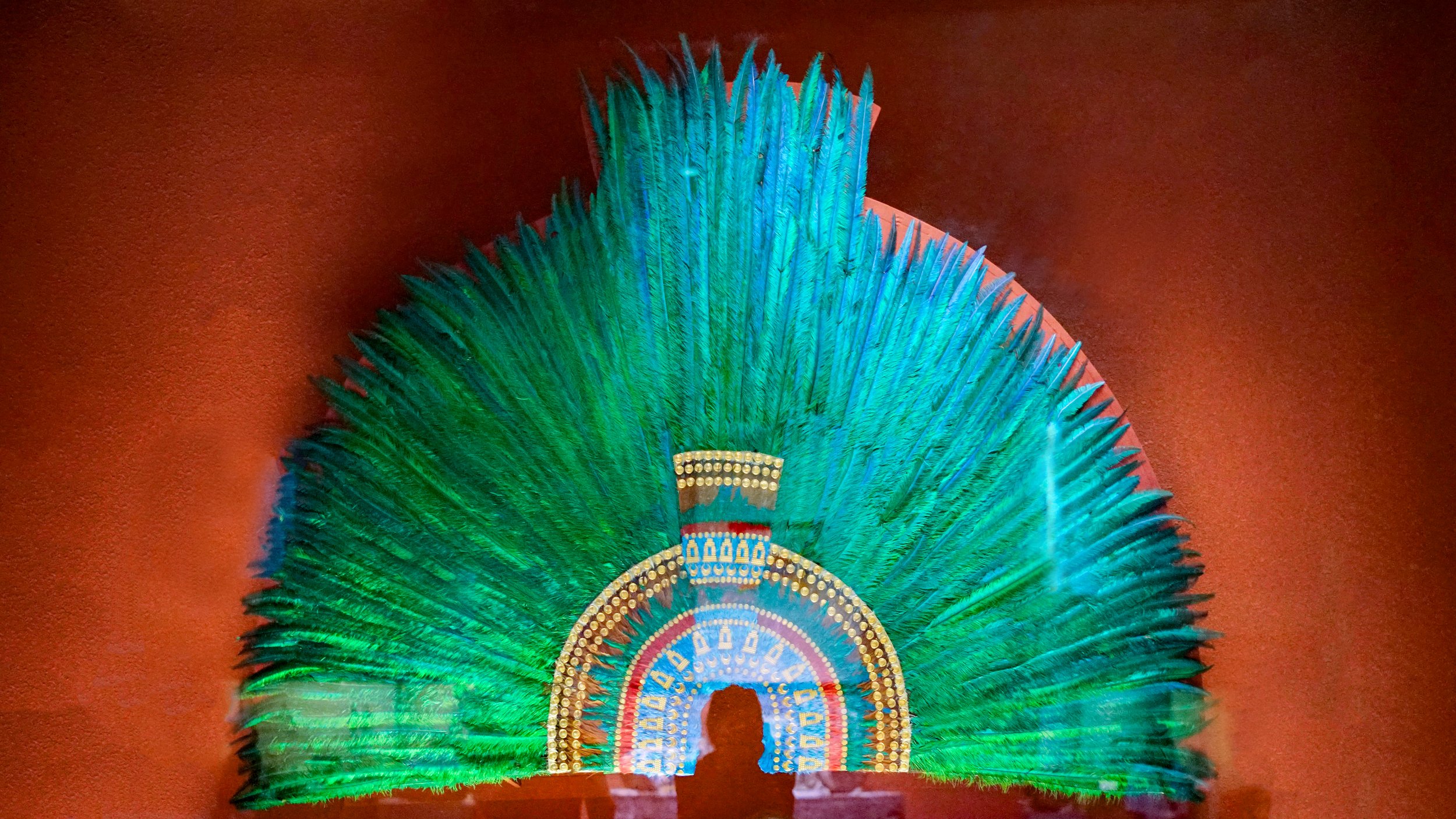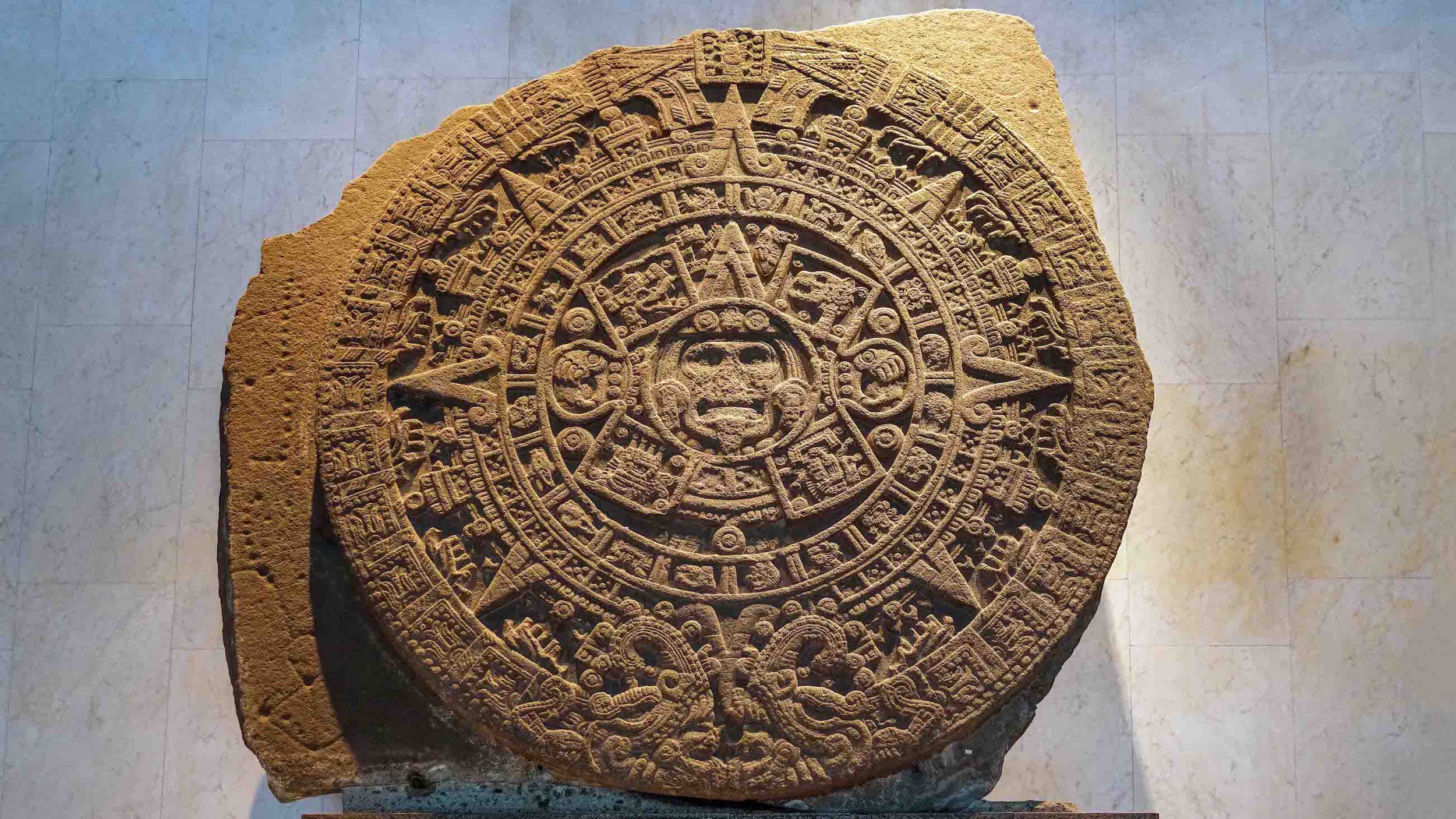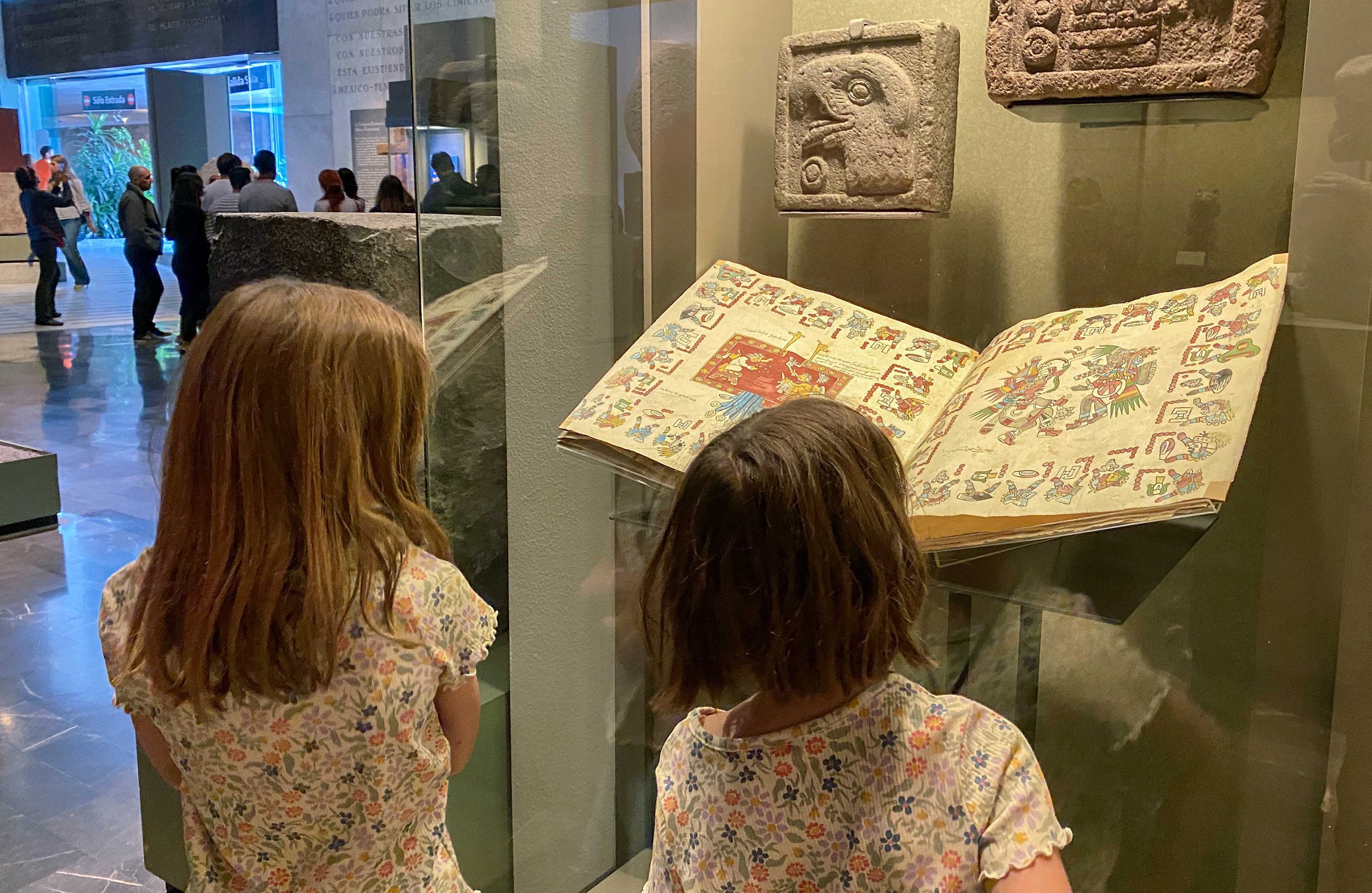Amazing Art of the Aztecs in Mexico City
Hall of the Aztecs at the National Museum of Anthropology, Mexico City in 2023
(Photo: © Lauren Kilroy-Ewbank)
It is the opinion of this art historian (hi, I’m Lauren!) that one of the best cities in the world is Mexico City. If you've never had the chance to visit, then I sure hope you get the chance to do so at some point in the future. Yes, it is a big, bustling city with a lot of people and commotion. But it has such an incredible vibrancy. And whew, the art! The architecture! The history! The food! 🤤
Replica of the Penacho of Motecuhzoma II or Feathered Headdress, Aztec/Mexica culture, in the Hall of the Aztecs at the National Museum of Anthropology, Mexico City in 2023
(Photo: © Lauren Kilroy-Ewbank)
The original feathered headdress is early 16th century and made of feathers from many birds (quetzal, cotinga, roseate spoonbill, piaya feathers) as well as amate paper, gold, cotton, wood, and more. Weltmuseum Wien, Vienna)
I could write many posts and essays (or books!) about all the incredible things to do and see in and near Mexico City—and I just might. But for now, I wanted to write a little about the amazing art of the Aztecs. I've visited Mexico City for work and pleasure many times (I even used to live a couple hours away), and the incredible art associated with Aztec culture continues to amaze me each and every time.
The House of the Eagles, c. 1400–1521 CE, next to the Templo Mayor, in Tenochtitlan (Mexico City today). Templo Mayor Site Museum
(Photo: © Lauren Kilroy-Ewbank)
Taking my family to Mexico City
Something that was special for me was a recent visit with my husband and two kids. I had no idea what to expect. Would they love the city? Would they enjoy the art and culture and food?! I was quickly reminded that even though I know a lot about Mexican art and history, I was not there to be a professor or tell them all the things. So I had to experiment with how to provide little tidbits of information or to get them looking and questioning.
The remains of the Templo Mayor (“Great Temple”) of the Aztecs. The Metropolitan Cathedral is next to it today. The Templo Mayor was at the heart of the sacred precinct of Tenochtitlan (Mexico City today)
(Photo: © Lauren Kilroy-Ewbank)
And guess what? My kids loved Aztec art. They were interested in the monumental-sized stone sculptures. They had a lot of questions about symbols and forms and materials. They wanted to pose next to sculptures. (The Aztec eagle warrior at the Templo Mayor Museum was a big hit!) They wanted to know why some of it was in better shape than others. And they also wanted to know how some of it was used. I even got to sneak into the conversation a few times that technically the Aztecs called themselves the Mexica, not the Aztecs (that name came much later!).
Eagle Warrior, ceramic, originally from the House of the Eagles, c. 1400–1521 CE, next to the Templo Mayor, in Tenochtitlan (Mexico City today). Templo Mayor Site Museum
(Photo: © Lauren Kilroy-Ewbank)
The Templo Mayor Site and Museum
We had a few different opportunities to experience Aztec art. We visited the always incredible Templo Mayor site and museum. They loved going through the museum and then seeing where objects were excavated as we walked through what remains of the Templo Mayor. They also enjoyed the physical activity of walking around the site.
Sun Stone (“Calendar Stone”), Aztec/Mexica culture, c. 1500, stone, hanging in the Hall of the Aztecs at the National Museum of Anthropology, Mexico City in 2023
(Photo: © Lauren Kilroy-Ewbank)
The National Museum of Anthropology
We spent much of a day at the National Museum of Anthropology—filled as it is with so much high-quality art but whew, prepare yourselves for the marathon. This is one of the best museums in the world, located in Chapultepec Park. It’s intimidating even to me—I could spend a week inside this museum and still not feel like I had enough time. My kids were, of course, excited to see the famous Aztec Sun Stone (“Aztec Calendar Stone”) and some other objects I’d introduced to them. Mainly, though, I let my kids guide us around based on their interests.
Sacrificial blade with a face (tecpatl), in the Hall of the Aztecs at the National Museum of Anthropology, Mexico City in 2023
(Photo: © Lauren Kilroy-Ewbank)
My younger daughter made it her mission to find all the knives that had faces on them (the anthropomorphized sacrificial blades, or tecpatl in Nahuatl). She thought they were hilarious. I had to explain what they were in an age appropriate way, which she was into. We also turned it into a counting game.
My kids actually, kinda sorta enjoy museums now! Here they are in the Hall of the Aztecs at the National Museum of Anthropology, Mexico City in 2023
(Photo: © Lauren Kilroy-Ewbank)
One of the more brilliant ideas I came up with, if I do say so myself, was creating a scavenger hunt for the kids to complete. I had the benefit of knowing the museum collections very well, so it was fun to create. Things like finding images of a jaguar or corn cobs, or looking for something made of feathers or turquoise. It was a fun way to engage them in looking closely and helping them to circulate through this museum and the other museums we visited. (I'll share that scavenger hunt!).
Trajineras lined up at the canals of Xochimilco in southern Mexico City, 2023
(Photo: © Lauren Kilroy-Ewbank)
The Canals and Axolotls of Xochimilco
We also spent a couple of hours on the canals of Xochimilco, talking about chinampas and axolotls. The kids LOVED visiting the canals at Xochimilco. I'm sure that the endless yummy snacks we could buy as we navigated the canals helped. 🤣. But they were interested in what chinampas looked like, and it was so fun to just show them! And to get them to imagine the Aztec capital of Tenochtitlan, now Mexico City, as a city of canals. It was something they couldn't imagine until they experienced it.
An axolotl
And my youngest is obsessed with axolotls, so the visit to Xochimilco allowed us to chat a lot about these adorable amphibians. They were a big part of Aztec culture, and let me tell you—she was so into learning about this! We chatted about axolotls as food and how they were (and are) a sign of the canal ecosystem being healthy.
Walking around the Historic Center
Just walking around the Historic Center of Mexico City was an incredible experience. It was delightful to share the city I love with my family. The kids had a lot of questions about why buildings were lopsided and sinking, which also prompted an important conversation about how Lake Texcoco was drained after the Spanish invasion and conquest. Before the city was Mexico City it was the capital of the Aztec Empire, Tenochtitlan, which was built on an island in the middle of Lake Texcoco. With the Spanish conquest, and the desire to grow the city, the lake was drained—resulting in an unstable foundation over time. We could also discuss why buildings like the Templo Mayor are in a ruined state—they were dismantled or destroyed with the Spanish conquest.
At some point, I plan to create more specific travel itineraries or ideas for art visits, along with the scavenger hunts, for those interested. But I hope you are inspired to explore Aztec art on your next trip to Mexico City.
Learn more!
Check out all of our resources, including videos and readings, about the Aztecs!
